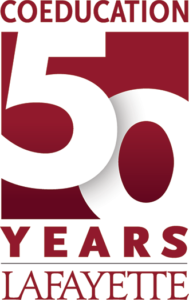Meet Lafayette’s Trailblazers
Being the first to assimilate into a previously male-dominated campus presented its share of excitement and challenges for the 123 first-year and 23 transfer students. Ultimately, they persevered, laying the groundwork for female students, faculty, and staff to follow in their footsteps and positively impact Lafayette’s academic and athletic programs, and history.
Lafayette is celebrating this historic milestone by highlighting the advances of women at the College and their influence on Lafayette, their fields of study, and the world. Over the last 50 years, Lafayette has changed dramatically. Women now outnumber men in number of students attending (51% women; 49% men), nearly 50% of faculty are women, and the College has added 11 Division I women’s sports.
“One aspect of Lafayette I have always admired is how smoothly the College made the transition to coeducation,” says Alison Byerly, Lafayette’s first female president. “Once the vote was taken, there was no looking back, and the immediate positive impact of the women who were admitted proved the wisdom of the College’s decision. Admitting women was a game-changer for Lafayette, expanding the College’s enrollment pool and strengthening the quality of the student body.”
In honor of this milestone, meet six leaders who have made great contributions to the College and/or their respective fields to make Lafayette and the world better. They include: a former four-sport athletics coach, emeritus and current faculty members, alumnae leaders in technology and science, and a superstar student.
Just like the original 146 who were the first to walk Lafayette’s campus 50 years ago, these six are each trendsetters in their own right through their efforts to advance change and tackle challenges, resulting in a brighter future for women today.
The Scientist
Laneta Dorflinger ’75 H’17
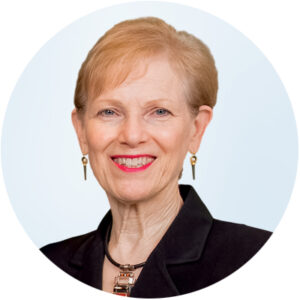 As the first woman to graduate with a Bachelor of Science degree in chemistry, Laneta Dorflinger ’75 H’17 found herself among only a few women in her upper-level chemistry classes during her time at Lafayette. “Looking back, while there were few women, my professors were very supportive. Many faculty lived on ‘The Hill,’ and we would walk to their homes for periodic dinners. When I’m back on the campus now, I occasionally walk past the house of my Russian professor and fondly remember those meals—a bit of home away from home.”
As the first woman to graduate with a Bachelor of Science degree in chemistry, Laneta Dorflinger ’75 H’17 found herself among only a few women in her upper-level chemistry classes during her time at Lafayette. “Looking back, while there were few women, my professors were very supportive. Many faculty lived on ‘The Hill,’ and we would walk to their homes for periodic dinners. When I’m back on the campus now, I occasionally walk past the house of my Russian professor and fondly remember those meals—a bit of home away from home.”
Dorflinger was a member of the first women’s basketball team and was in the first group to travel with Rado Pribic, Oliver Edwin Williams Professor of Languages, to the Soviet Union—an experience that launched her interest in pursuing an international career. After graduating from Lafayette, Dorflinger earned a Ph.D. at Yale University, where her interest in reproductive biology was spawned by a famous professor. “I was hooked on day one of his class, staying up late into the nights reading and thinking it can’t possibly get more interesting than this!” Her postdoctoral training in a laboratory at Harvard School of Public Health led to her eventual pursuit of a career in public health.
With commitment, hard work, and self-confidence, you can do anything you set your mind to.
In the early ’80s, Dorflinger was accepted to a fellowship program sponsored by the American Association for the Advancement of Science and worked at USAID as the technical officer for programs developing many of the contraception options on the market today. Since 1991 Dorflinger has worked for FHI 360, a large international nongovernmental development assistance organization, where she built and currently leads their contraceptive development program. In addition to her daily responsibilities, she seeks opportunities to mentor women in the workplace. “I spend a lot of time helping women find their strength and the courage to become their best,” she says. Her advice: “Be strong, be self-confident. Don’t allow people to put you down. With commitment, hard work, and self-confidence, you can do anything you set your mind to.”
Dorflinger was the third alumna to become a member of the Lafayette Board of Trustees, serving three consecutive terms from the late ’80s to 2003. She was named trustee emerita before resuming active status in 2020. One of her fondest Lafayette memories is actually a more recent one. In 2017, she received an honorary degree (Doctor of Science). “It makes me smile to think that a female president presented me with the degree, and a female classmate (Trustee Emerita Nancy Kuenstner ’75) presented the academic hood,” she explains. “For me, there wasn’t a better day! Never in my wildest dreams could I have imagined when I left Lafayette in 1975 that I would be receiving an honorary degree years later.”
The Advocator
Barbara Young P’96
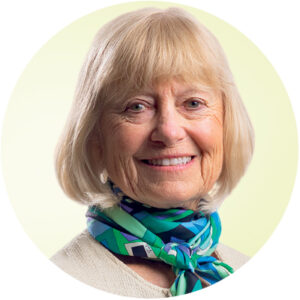 There aren’t many college coaches who have served as head coach for three different sports teams. And there isn’t anyone like Barbara Young P’96. When Young began coaching in 1975, there were approximately 120 women on campus. She actually coached four sports if you include her assistant coach position with the field hockey team. “The interesting thing is we had one set of uniforms,” explains Young. “They were these ‘very attractive’ tunics. When one season ended, they passed them onto the next team. By the time the uniforms came to tennis, the players refused to wear them, and they just wore whatever they wanted.” Fortunately for the women’s teams, this practice was short lived. Within a year, the teams were supported with additional equipment and resources thanks to Young’s relentless advocacy, a practice that she continued to perfect for almost 30 years.
There aren’t many college coaches who have served as head coach for three different sports teams. And there isn’t anyone like Barbara Young P’96. When Young began coaching in 1975, there were approximately 120 women on campus. She actually coached four sports if you include her assistant coach position with the field hockey team. “The interesting thing is we had one set of uniforms,” explains Young. “They were these ‘very attractive’ tunics. When one season ended, they passed them onto the next team. By the time the uniforms came to tennis, the players refused to wear them, and they just wore whatever they wanted.” Fortunately for the women’s teams, this practice was short lived. Within a year, the teams were supported with additional equipment and resources thanks to Young’s relentless advocacy, a practice that she continued to perfect for almost 30 years.
Young worked most extensively with the tennis program, but also served as head coach of women’s volleyball (175 wins) and women’s basketball (59-26). She was the head women’s tennis coach for 28 years and spent six seasons as the men’s coach. Throughout her term, the combined men’s and women’s tennis record was 389-186-2.
Thankfully, women’s sports have evolved and become so much more sophisticated.
Women’s sports performed very well from the very beginning, and with athletics in the public eye, this helped advance support for the teams. “Lafayette was ready for coeducation and ready to support women,” explains Young. “Tennis, in particular, is a sport where the men’s and women’s teams can be played together, which was an advantage. Both teams traveled together, shared home matches, and on Fridays, we had mixed doubles. The team was regarded as a whole, which was very important when you are talking about a time in College history when the institution had recently transitioned to coeducation.”
In addition to her duties as head coach, Young was also a part of Lafayette’s athletic department, serving as the school’s assistant director of athletics and as senior woman administrator 1999-2001. Throughout her distinguished career, Young witnessed the single largest advancement in women’s sports—Title IX, which leveled the playing field for women. “Thankfully, women’s sports have evolved and become so much more sophisticated,” says Young.
In addition to her coaching duties, Young coordinated competitions for intramural sports, led a ski club (cross-country and downhill), and taught tennis to faculty and staff. Young’s children, Kate ’96 and Matt, would often be found on campus racing athletes during warmups, or racing their mother downhill at nearby ski slopes during her weekly ski trips with faculty and staff.
When Young retired in 2003, Trustee and then Chairman of the Board Ed Ahart ’69 asked if she would take up golf. Her reply, “Hmm … I played golf in high school but never thought about playing in retirement.” It is no surprise that Young has since played in every state in the U.S. and at the southernmost tip of South America, Tierra del Fuego.
The Problem Solver
Stacey-Ann Pearson ’15
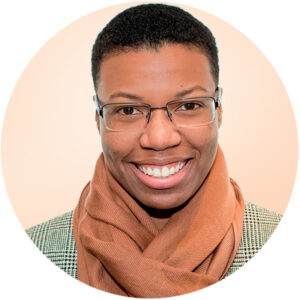 There’s something to be said about those who “hustle,” not in the negative sense, but those who never stop seeking new opportunities, growing, and learning. For Stacey-Ann Pearson ’15 the hustle is discovering solutions to problems. But these solutions are “gems” to Pearson, who never stopped hustling since the first time she stepped foot on College Hill as an international student from Jamaica. “As an immigrant student on financial aid, I often didn’t have the same luxuries as other students. So I hustled to constantly find those hidden opportunities that Lafayette had to offer, and it was fun.”
There’s something to be said about those who “hustle,” not in the negative sense, but those who never stop seeking new opportunities, growing, and learning. For Stacey-Ann Pearson ’15 the hustle is discovering solutions to problems. But these solutions are “gems” to Pearson, who never stopped hustling since the first time she stepped foot on College Hill as an international student from Jamaica. “As an immigrant student on financial aid, I often didn’t have the same luxuries as other students. So I hustled to constantly find those hidden opportunities that Lafayette had to offer, and it was fun.”
Pearson adapted this mindset to a career in technology strategy, where she finds solutions to problems as head of international business development, innovation, and marketing at Oxford-Hainan Blockchain Research Institute in southern China. “We conduct research on how to bring blockchain further to market,” explains Pearson. “Blockchain has been a hot topic in the technology space, and lots of companies are trying to figure out how to use it. But it still has a high barrier to entry, and the technology itself has a long way to go to be able to scale it for everyday use.”
The foundation that Lafayette provided and the subsequent Schwarzman Scholarship paved the way for me to hone the skills that I still practice today.
Pearson’s road to China began as a result of being chosen to receive the prestigious Schwarzman Scholarship in 2017 after graduating from Lafayette, the first Lafayette alumna to receive such an honor. The Schwarzman Scholars program is a global initiative, based at Tsinghua University in Beijing, China, which aims to cultivate elite young leaders who bring an entrepreneurial bent to international relations. Before moving to China, Pearson spent
two years at Morgan Stanley in New York, where she also mentored homeless and underrepresented youth as a nonprofit board member, life coach, and high school mentor.
Pearson’s last three years in China have left a lasting mark. Her biggest takeaways? As a neutral third party (she is neither Chinese nor American), she recognizes the gap between how both cultures conduct business and the true importance of open communication and bridge building. In addition, the sheer size of China still fascinates Pearson, who realized that it is almost impossible to be an expert on China. “There are so many different belief systems, cultures, and people, in addition to it being a semi-isolated society with some surprisingly heterogeneous characteristics,” Pearson explains. “It makes a lot of sense that misunderstandings are so commonplace.”
At Lafayette, Pearson studied civil engineering and economics, was an EXCEL Scholar where she conducted research in renewable energy, co-founded an LGBTQ safe haven, won social activism awards, was student liaison to the Board of Trustees Finance Committee, and was a finalist for the Pepper Prize. “Lafayette was really helpful in not keeping me in an engineering bubble,” explains Pearson. “With a liberal arts education, I was able to take public speaking, philosophy, economics, language, and other classes, which really helped to stretch my mind beyond just numbers. The foundation that Lafayette provided and the subsequent Schwarzman Scholarship paved the way for me to hone the skills that I still practice today.”
The Mentor
Mary Roth ’83
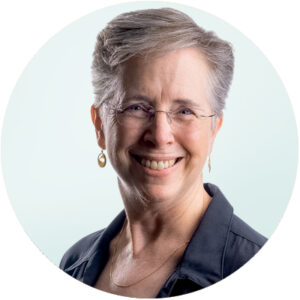 When Mary Roth ’83, Simon Cameron Long Professor of Civil and Environmental Engineering and department head in civil and environmental engineering, arrived as a first-year student in 1979, the College’s shift to coeducation had already progressed eight years. Sororities had formed, dorms were transitioning to coed (there were no longer door guards!), and there were more women enrolled in Lafayette’s engineering program. As a civil engineering major, Roth’s classes were already one-third women. “In 1979, there were very few engineering schools where engineering was offered within a liberal arts environment—I believe that option was very attractive to women and brought women engineers to Lafayette,” says Roth. Today, the College’s engineering programs consist of nearly 40% women. And, nearly one-third of full-time faculty members in Lafayette’s engineering programs are women, compared to the national average of 13.9%, according to the American Society for Engineering Education.
When Mary Roth ’83, Simon Cameron Long Professor of Civil and Environmental Engineering and department head in civil and environmental engineering, arrived as a first-year student in 1979, the College’s shift to coeducation had already progressed eight years. Sororities had formed, dorms were transitioning to coed (there were no longer door guards!), and there were more women enrolled in Lafayette’s engineering program. As a civil engineering major, Roth’s classes were already one-third women. “In 1979, there were very few engineering schools where engineering was offered within a liberal arts environment—I believe that option was very attractive to women and brought women engineers to Lafayette,” says Roth. Today, the College’s engineering programs consist of nearly 40% women. And, nearly one-third of full-time faculty members in Lafayette’s engineering programs are women, compared to the national average of 13.9%, according to the American Society for Engineering Education.
In 1979, there were very few engineering schools where engineering was offered within a liberal arts environment—I believe that option was very attractive to women and brought women engineers to Lafayette.
Roth’s Lafayette education came full circle when she began as an instructor at the College in 1991. Since that time, her 30-year Lafayette career includes serving as a long-standing member of the faculty in civil engineering as well as associate provost 2008-2014. She continues to be named by female students in particular as a favorite mentor and teacher. In 2000, Roth was the recipient of a Fulbright Grant to conduct research in Oslo, Norway, with the Norwegian Geotechnical Institute. In 2006, she was named the Simon Cameron Long Professor of Civil and Environmental Engineering.
Currently, Roth is working with Laurie Caslake, professor and department head of biology, on research involving controlling the permeability and strength of soils through the use of bacteria. Their research is supported by the National Science Foundation (NSF). In fact, in 2004, Roth and Caslake were the first researchers in the United States to receive NSF funding to work with bacteria to change the engineering properties of soil. Their current research involves working with bio-stimulated microbial-induced calcite precipitation (MICP), which uses the bacteria in the soil to cement soil particles together and strengthen the soil. “Bio-stimulated MICP is a developing area of research, and it has been used in only a few types of natural soils,” explains Roth. “We have developed a simple apparatus and inexpensive treatment and testing protocols so that individuals or groups from around the world can use the process on samples of their local soils and report their results.”
Roth continues to inspire and mentor students in the same manner as her favorite Lafayette professors. Who was Roth’s favorite professor as an undergraduate? “James Crawford, professor of mathematics and an active thespian,” says Roth, who also participated in theater and was a member of a woodwind quintet. “The Williams Center for the Arts opened the year I graduated, and since then, visual arts has come a long way from the days of students practicing in Alumni Gym.”
The Perseverer
Susan Basow
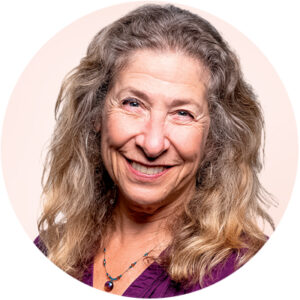 Susan Basow, Charles A. Dana Professor of Psychology Emerita, arrived at Lafayette in 1977 as a full-time faculty member and part-time counselor in the Counseling Center (there was only one full-time counselor at the time). “In 1977, no more than 50% of faculty could be tenured so it was unlikely that new faculty would remain at Lafayette because 47% of the faculty were already tenured, all but two of whom were men,” explains Basow. “At that time, in the psychology department alone there was one slot for five people.”
Susan Basow, Charles A. Dana Professor of Psychology Emerita, arrived at Lafayette in 1977 as a full-time faculty member and part-time counselor in the Counseling Center (there was only one full-time counselor at the time). “In 1977, no more than 50% of faculty could be tenured so it was unlikely that new faculty would remain at Lafayette because 47% of the faculty were already tenured, all but two of whom were men,” explains Basow. “At that time, in the psychology department alone there was one slot for five people.”
Basow was ultimately chosen among her colleagues to receive tenure and named department chair in 1993. She diligently advocated to ensure that women students, faculty, and staff were supported throughout her time at Lafayette. Along with colleagues, Basow created a support group, the Professional Women of Lafayette, comprised of faculty and staff who would meet regularly to discuss ways to improve the climate for women on campus. Several members had an interest in women’s studies, and they immersed themselves in the field. The first women’s studies course was offered at the College in 1983 and was team taught. “The class was always filled,” explains Basow. “We started offering one course each semester because there was so much interest.”
The ways in which our faculty have become more diverse, not only by gender but by race, ethnicity, and sexual orientation, has benefited the community.
Basow and her colleagues worked for many years to gain support for the program, with Basow taking a leadership role. Looking back, she says she was fortunate to have found a group of people who were committed to influencing change. Due to increased student interest in academic offerings, they advocated for a minor in women’s studies, which was first offered in 1986. At the time, Lafayette was the first institution in the Lehigh Valley to do so. That minor gradually grew to a major. Since 2011, the women’s, gender, and sexuality studies major has flourished, and the Introduction to Women’s Studies course is still one of the most popular courses offered today, with nearly 1,100 students registered over the last decade.
Basow recently retired from Lafayette, but her legacy lives on in the many ways she has impacted students and the campus. “The ways in which our faculty have become more diverse, not only by gender but by race, ethnicity, and sexual orientation, has benefited the community,” explains Basow. “Our students can understand experiences and see themselves mirrored in the faculty, which is a huge asset. Seeing women in leadership positions makes an impact on our students. We have a lot to be proud of, but it has been a long, long journey.”
The Impactor
Savanna Touré ’21
 When most Lafayette students are asked to name their favorite professor or favorite class, they usually mention one or two. Not Savanna Touré ’21, a neuroscience major from Washington, D.C. That question is met with, “Only one? There are SO many!” Touré has made quite a mark at Lafayette, and if her many accomplishments are a precursor of what is to come for this future physician, we can expect to hear more about Dr. Touré in the future.
When most Lafayette students are asked to name their favorite professor or favorite class, they usually mention one or two. Not Savanna Touré ’21, a neuroscience major from Washington, D.C. That question is met with, “Only one? There are SO many!” Touré has made quite a mark at Lafayette, and if her many accomplishments are a precursor of what is to come for this future physician, we can expect to hear more about Dr. Touré in the future.
Touré is the first Lafayette student to receive the Truman Scholarship, a graduate-level scholarship for those interested in pursuing a field as a public servant. Her scholarship will support one year of master’s-level coursework after graduating from Lafayette. She is currently applying to combined M.D./Ph.D. programs in order to pursue her dual passion of becoming a clinician to improve health disparities, while simultaneously researching viruses, specifically HIV and HPV. “I always had an interest in reproductive health,” she explains. “I also know that Black women have more of a challenge with fertility, miscarriages, etc. We know there aren’t enough physicians of color, so by becoming a physician and focusing on this area of expertise, I can make a difference.”
We know there aren’t enough physicians of color, so by becoming a physician and focusing on this area of expertise, I can make a difference.
Touré was first introduced to Lafayette through the Posse Foundation during her junior year of high school. Touré attended a magnet school in Washington, D.C., for the humanities, and after learning more about Posse through a visit to her high school, she was hooked. “During the interview process we had the ability to research schools, and Lafayette was among the selections. I felt choosing a school with a strong STEM curriculum and a liberal arts background would be the best choice for me.”
During her time at Lafayette, there isn’t much that Touré hasn’t accomplished. In addition to the Truman Scholarship, she is also a recipient of a prestigious Goldwater Scholarship, which enabled her to work as a medical volunteer in Cape Town, South Africa, in spring 2020. She also was an EXCEL Scholar and a research intern at George Washington University Milken Institute School of Public Health.
This past summer, Touré, along with a group of fellow activists, started Freedom Fighters DC, a nonprofit organization aimed at providing mutual aid and outreach to communities in the Washington, D.C., area. Their efforts stemmed in response to the murders of George Floyd, Breonna Taylor, and Tony McDade. “We were one of the first groups to organize when everything happened, planning demonstrations and community efforts,” she says. The group has since grown to include more than 100 members and volunteers. More recently, Touré joined fellow students in efforts to make Lafayette a more inclusive and equitable community through an initiative entitled “Dear Lafayette College.”
Touré credits a trifecta of support for her success at Lafayette: Posse, the Goldwater Scholarship, and the support she has received from faculty, especially Khadijah Mitchell, Peter C.S. D’Aubermont, M.D., ’73 Scholar of Health and Life Sciences. “She is a Black woman, in the field I am interested in, and she is active in her community,” says Touré. “I can relate to her on so many levels. She is my ‘go-to’ person to make my day right.”
Marking the Moment
More than 100 members of the first classes of women assembled virtually on Sept. 10 to celebrate the anniversary of the first day of class 50 years ago. The historic moment marked the beginning of Lafayette’s transition to coeducation. Members of the “First Women,” (female graduates between 1972-81) representing the first decade of coeducation at the College, shared reflections and virtual toasts to commemorate the occasion including Darlyne Bailey ’74, Ann Shellenberger Bell ’76, Ellen Kravet Burke ’76, Cindy Oaks Linville ’80, Susan Oaks Little ’78, and Marion Shapiro Saffer ’77. Among the attendees were Lafayette’s first female President, Alison Byerly, and Chair of the Board of Trustees, Robert Sell ’84, who presented a toast to “All the First Women, who fearlessly stepped on campus in September 1970, and those who have continued to lead Lafayette since that day.”
Learn more about events planned throughout the 2020-21 academic year at coeducation.lafayette.edu.
But wait…there’s more!
 To Learn more about Lafayette female and male alumni, faculty, and staff whose stories illustrate the impact of coeducation and the advancement of Lafayette, read Lafayette’s 50 for 50 list. coeducation.lafayette.edu/50-for-50
To Learn more about Lafayette female and male alumni, faculty, and staff whose stories illustrate the impact of coeducation and the advancement of Lafayette, read Lafayette’s 50 for 50 list. coeducation.lafayette.edu/50-for-50
Remember When?
From dances in Marquis Hall, to Powder Puff football games, we hope you enjoy these glimpses of Lafayette when the College transitioned to coeducation.
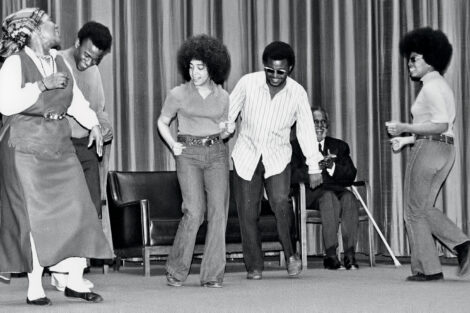
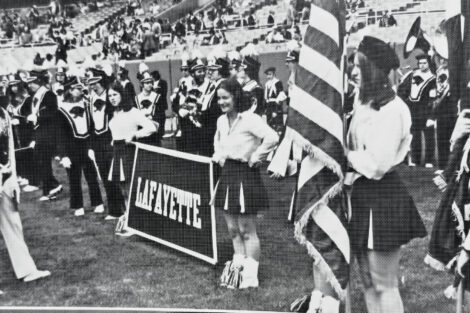
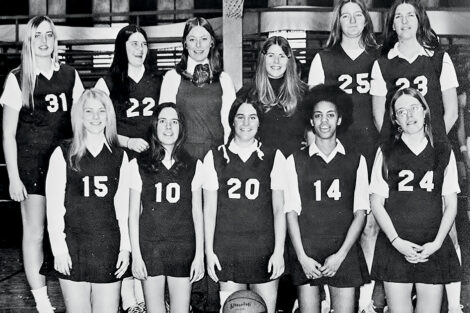
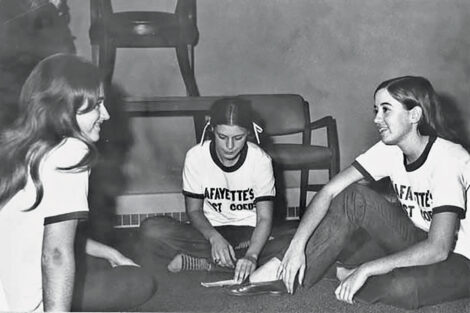
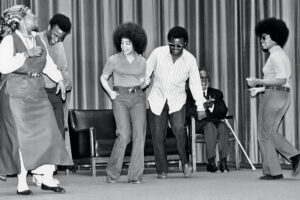
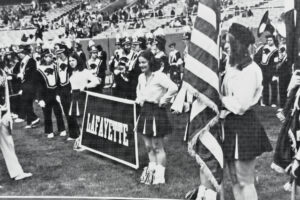
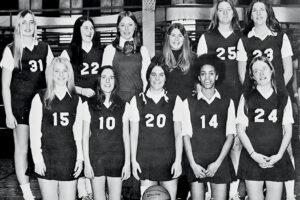
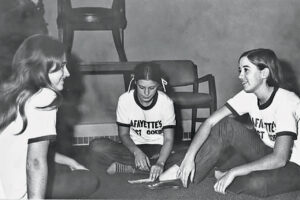
View additional photos from the archives coeducation.lafayette.edu
